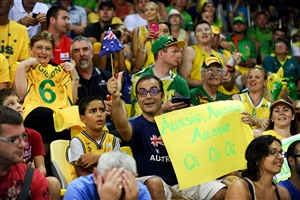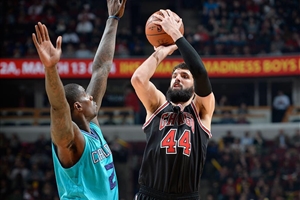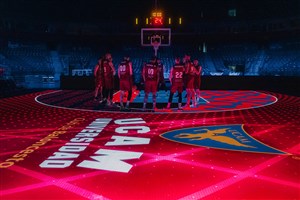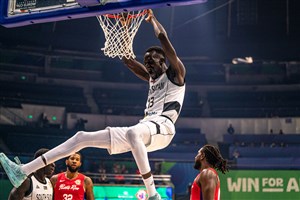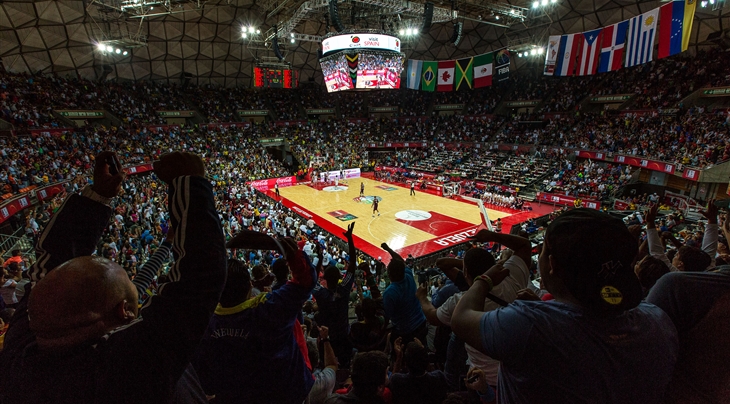
The Big If: Last FIBA Americas Championship of its kind
SAN JUAN (William Rosario's Somewhere in the Americas) - The Official Draw of the 2015 FIBA Americas Championship was held this past Wednesday in Monterrey, Mexico. For everybody in attendance it was business as usual, but for the few characters that were there and have been a part of the championship since its beginning it was a bittersweet moment.
Bitter because it is a tournament full of great memories. Some of the best players in the history of international basketball have had memorable moments within the context of the continental event. Luis Scola won seven medals (2 gold, 2 silver, 3 bronze from 2001-2013), Jose “Piculín” Ortiz won six (2 gold, 3 silver, 1 bronze from 1988-2003), Oscar Schmidt won five (2 gold, 3 bronze from 1980-1992), and Manu Ginobili won four (2 gold, 1 silver, 1 bronze from 1999-2011) playing in it.
In attendance, Sergio Hernandez, Argentina’s current national team head coach has won three medals (2 silver, 1 bronce) in the championship, while Eddie Casiano, Mexico’s current national team head coach, has won two (1 gold, 1 bronze) as a player for the Puerto Rican national team. Even FIBA Americas’ current Regional Director, Alberto Garcia refereed the gold medal game in 1989’s edition.
But it was also a sweet moment because one could feel the excitement about there being a wonderful light at the end of the tunnel with FIBA’s new competition system.
That’s why I think this last FIBA Americas Championship of its kind should be celebrated rather than mourned. It has been the most important part of our continent’s international basketball experience and now the time has come for us to say good-bye and move on to bigger and better things.
The FIBA Americas Championship has been played a total 16 times (Monterrey being the 17th). It has consistently brought together the best national teams in the continent looking to win a spot to either the Olympic games or the FIBA Basketball World Cup, depending on the event it precedes.
Under the current system, the champion of either the World Cup or the Olympic games automatically qualifies to the next edition of either of those tournaments in the cycle.
And that has been the championship’s biggest obstacle in recent years. This 2015 edition will mark the eighth anniversary of the last time we saw USA in the competition. Which means that this will be the fourth championship in a row that has simply served as a qualifier, literally being called “Pre-olimpico” or “Pre-Mundial” throughout the Americas in a completely understandable turn of phrase given the fact that the champion of the tournament could not be branded as the best of the continent, without the USA being there.
The competition system has also become outdated. In a current era where the bigger stars in the elite national teams are NBA players, the FIBA Americas Championship grind has simply become too difficult to handle in the year’s calendar.
This was most evident in the 2011 edition in Mar del Plata. With the event being in Argentina, the Golden Generation decided to reunite for one last time and give the fans a close-up look at their greatness. The whole gang was there and made it all the way to the podium as champion in a very emotional tournament in which they played 10 games in 12 days.
One could see how much of a toll it took to play that many games for the veterans NBA-82-regular-season-games players of Argentina. Ginobili was spent in the gold medal game. I had to escort him to the post-game press conference and he was completely exhausted. Who could fault him?
So the conversation now revolves exclusively around the Big Ifs. Even after the draw this week, listening to the questions from the media in Monterrey, they were all about “Is Gustavo Ayon going to play?” or “Is Jorge Gutierrez going to play” for Casiano, while for Hernandez the majority revolved around “Is Ginobili going to play?”.
That goes around. The consensus after the results of the draw were about the parity of the championship and how the 10 teams have a real shot of at least making it to the Olympic Qualifying Tournament next year, but there wasn’t an opportunity to go deeper, to really analyze the field. The Big ifs are still out there. Is Andrew Wiggins going to be there for Canada? Is Al Horford going to be there for Dominican Republic?
This is where the new system will be great. The home and away games will allow small windows of commitment from the players in the qualifying phase over a longer span of time. A guy like Ginobili, Ayon or Horford has to come and only play two games every three months to be part of the national team. And if they are not there, international basketball does not lose them for two years like in the current system, but for only three months. So stars can be seen in a more consistent matter wearing their national team colors.
The system also allows for there to be a new FIBA Americas Championship.
With qualification out of the way, the tournament can evolve into something more along the lines of the Copa America in fútbol, at least in spirit. This new FIBA Americas Championship can be anything, a shorter (with less games), maybe an NCAA March Madness type of competition. Who knows? But it can revamp itself to be more appealing to the stars and the USA to want to play it. Then it can become a big product that really crowns the best team from the Americas.
This is where the sweet overpowers any bitterness that’s in the air with this being the last FIBA Americas of its kind. The possibilities of growth and evolution are endless. That excitement for the great things that are about to happen for international basketball overpowers anything. Let’s toast to this 2015 edition in Monterrey with full confidence in the future of the game. It’s not a Big If anymore, but a Big When.
William Rosario
FIBA
FIBA's columnists write on a wide range of topics relating to basketball that are of interest to them. The opinions they express are their own and in no way reflect those of FIBA.
FIBA takes no responsibility and gives no guarantees, warranties or representations, implied or otherwise, for the content or accuracy of the content and opinion expressed in the above article.

